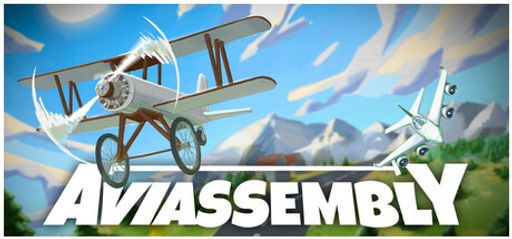 Hey everyone, excited to talk Aviassembly by developer and publisher Jelle Booij. A player with a real pilot’s license raved about its simple but gorgeous graphics and fitting music, emphasizing the game’s authenticity. They logged about eleven hours on the main campaign and praised how intuitive yet immersive it felt. Personally, I loved exploring new islands and hidden airstrips. At just 300 MB, it runs on almost any PC—even older setups—making it incredibly accessible. That indie vibe really shines through from the start.
Hey everyone, excited to talk Aviassembly by developer and publisher Jelle Booij. A player with a real pilot’s license raved about its simple but gorgeous graphics and fitting music, emphasizing the game’s authenticity. They logged about eleven hours on the main campaign and praised how intuitive yet immersive it felt. Personally, I loved exploring new islands and hidden airstrips. At just 300 MB, it runs on almost any PC—even older setups—making it incredibly accessible. That indie vibe really shines through from the start.
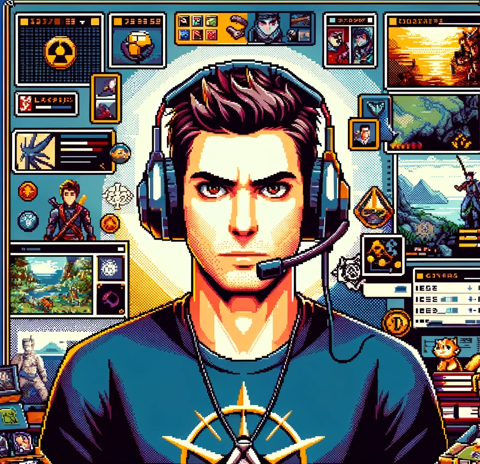 That said, I agree—Aviassembly feels packed for an indie title. It offers side missions, unique cargo types, and a full upgrade tree that gives you freedom to tailor your aircraft. One review said they wrapped up all content in under six hours, but I still found dozens of secret islands tucked away. I mapped every airport and logged each collectible, adding hours of rewarding exploration. For a one-person studio, Jelle Booij delivers real depth and polish that rivals larger teams.
That said, I agree—Aviassembly feels packed for an indie title. It offers side missions, unique cargo types, and a full upgrade tree that gives you freedom to tailor your aircraft. One review said they wrapped up all content in under six hours, but I still found dozens of secret islands tucked away. I mapped every airport and logged each collectible, adding hours of rewarding exploration. For a one-person studio, Jelle Booij delivers real depth and polish that rivals larger teams.
 From my view, balancing weight and speed drives every mission. You juggle fuel, cargo space, and lift efficiency, all while managing drag. Notably, the performance graphs and telemetry remind me of Kerbal Space Program’s data charts, which add analytical depth. In an interview, Booij said he aims to refine flight sims with creative building and mission realism. I love seeing that kind of hardcore detail packed into a sub-ten-dollar game—an amazing value for budget-conscious sim fans.
From my view, balancing weight and speed drives every mission. You juggle fuel, cargo space, and lift efficiency, all while managing drag. Notably, the performance graphs and telemetry remind me of Kerbal Space Program’s data charts, which add analytical depth. In an interview, Booij said he aims to refine flight sims with creative building and mission realism. I love seeing that kind of hardcore detail packed into a sub-ten-dollar game—an amazing value for budget-conscious sim fans.
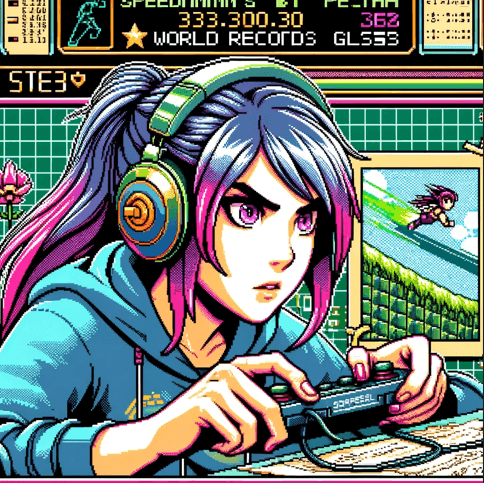 On the competitive side, I jumped straight into time trials. By trimming drag and tweaking wing angles, I cut my first route from five minutes to just three and a half. The clean HUD and precise sound cues help me nail each turn with accuracy. For a speedrunner, this game feels like a dream test bed. Quick resets, responsive controls, and tangible improvement on every run.
On the competitive side, I jumped straight into time trials. By trimming drag and tweaking wing angles, I cut my first route from five minutes to just three and a half. The clean HUD and precise sound cues help me nail each turn with accuracy. For a speedrunner, this game feels like a dream test bed. Quick resets, responsive controls, and tangible improvement on every run.
 Beyond speedruns, the core mechanics shine here, without a doubt. The physics-based flight model really sells takeoff and landing. Impressively, Jelle Booij built a custom engine in Unity that accurately handles lift curves and torque simulation. Even better, swapping parts in the aircraft designer is quick, intuitive, and deeply satisfying. In comparison, I looked at SimplePlanes and found Aviassembly’s cargo weight handling actually feels more realistic and responsive.
Beyond speedruns, the core mechanics shine here, without a doubt. The physics-based flight model really sells takeoff and landing. Impressively, Jelle Booij built a custom engine in Unity that accurately handles lift curves and torque simulation. Even better, swapping parts in the aircraft designer is quick, intuitive, and deeply satisfying. In comparison, I looked at SimplePlanes and found Aviassembly’s cargo weight handling actually feels more realistic and responsive.

 I spent hours in creative mode with infinite parts, testing wild designs and still got a steady 60 FPS on my GTX 1060. I could fine-tune tail size, wing dihedral, and fuel tank placement without framerate drops. Mapping every control to my joystick made the building process even smoother, adding immersion and control that rivals commercial-grade sims.
I spent hours in creative mode with infinite parts, testing wild designs and still got a steady 60 FPS on my GTX 1060. I could fine-tune tail size, wing dihedral, and fuel tank placement without framerate drops. Mapping every control to my joystick made the building process even smoother, adding immersion and control that rivals commercial-grade sims.
 In terms of innovation, the game pushes flight sims forward. Missions reward craft efficiency in a tangible way. You even get performance logs that show top speed, fuel burn, and aerodynamic balance. I see similarities to FlightGear’s telemetry, but here it ties directly into your mission score—making every design decision meaningful.
In terms of innovation, the game pushes flight sims forward. Missions reward craft efficiency in a tangible way. You even get performance logs that show top speed, fuel burn, and aerodynamic balance. I see similarities to FlightGear’s telemetry, but here it ties directly into your mission score—making every design decision meaningful.
 To add excitement, those cargo missions bring speedrun spice. You can risk low fuel to hop between islands faster, trimming route times for leaderboard gains. I love finding crosswind boosts off cliff faces to shave seconds and nail tighter landings with lighter builds. Also, it adds a thrilling, almost roguelike layer to delivery strategy.
To add excitement, those cargo missions bring speedrun spice. You can risk low fuel to hop between islands faster, trimming route times for leaderboard gains. I love finding crosswind boosts off cliff faces to shave seconds and nail tighter landings with lighter builds. Also, it adds a thrilling, almost roguelike layer to delivery strategy.
 Shifting gears to narrative elements, Aviassembly uses mission briefs and NPC voice-over plans on the roadmap. Right now, you haul supplies to new biomes—lush jungles, snowy ridges—and learn lore through text blurbs that add context. Booij said he wants voice logs, branching plot twists, and dynamic NPC reactions in future updates, which could greatly expand the world’s richness.
Shifting gears to narrative elements, Aviassembly uses mission briefs and NPC voice-over plans on the roadmap. Right now, you haul supplies to new biomes—lush jungles, snowy ridges—and learn lore through text blurbs that add context. Booij said he wants voice logs, branching plot twists, and dynamic NPC reactions in future updates, which could greatly expand the world’s richness.
 From a storytelling perspective, I personally liked reading each manager’s backstory in mission text. Meanwhile, the pacing stays tight and deliberate. Every half hour brings a fresh mechanical challenge—like terrain types, unstable weather, or new cargo mechanics, keeping you constantly adapting.
From a storytelling perspective, I personally liked reading each manager’s backstory in mission text. Meanwhile, the pacing stays tight and deliberate. Every half hour brings a fresh mechanical challenge—like terrain types, unstable weather, or new cargo mechanics, keeping you constantly adapting.

 As for dialogue, it stays simple and focused. I prefer clean, clear text boxes over half-baked voice acting. The mission notes sit side by side with cargo stats, giving instant reference during flight planning and mid-air reroutes—ideal for multitaskers and strategists.
As for dialogue, it stays simple and focused. I prefer clean, clear text boxes over half-baked voice acting. The mission notes sit side by side with cargo stats, giving instant reference during flight planning and mid-air reroutes—ideal for multitaskers and strategists.
 Thanks to that light narrative, I can focus on routes and speed. I appreciate the game respecting my time by skipping exposition dumps and keeping control in the player’s hands, allowing a fast, friction-free gameplay loop.
Thanks to that light narrative, I can focus on routes and speed. I appreciate the game respecting my time by skipping exposition dumps and keeping control in the player’s hands, allowing a fast, friction-free gameplay loop.
 Visually, Aviassembly pops with bright, low-poly art. It feels like Ylands meets early Untitled Goose Game. The water reflections use bloom shaders and refractive layers that look great on both high-end GPUs and modest setups, ensuring performance doesn’t sacrifice beauty.
Visually, Aviassembly pops with bright, low-poly art. It feels like Ylands meets early Untitled Goose Game. The water reflections use bloom shaders and refractive layers that look great on both high-end GPUs and modest setups, ensuring performance doesn’t sacrifice beauty.
 Even better, on my mid-range laptop, I saw zero pop-in. Each island’s color palette, from dusky pink deserts to ocean blue archipelagos, feels distinct and intentional. The minimalistic art hides deeply thought-out asset placement that makes each biome feel handcrafted.
Even better, on my mid-range laptop, I saw zero pop-in. Each island’s color palette, from dusky pink deserts to ocean blue archipelagos, feels distinct and intentional. The minimalistic art hides deeply thought-out asset placement that makes each biome feel handcrafted.
 On lighting, it works well for realistic dawn and dusk runs. Shadows stay sharp across ridges and hangars, and I can spot distant airstrips even during golden hour flights—ideal for altitude-based scouting.
On lighting, it works well for realistic dawn and dusk runs. Shadows stay sharp across ridges and hangars, and I can spot distant airstrips even during golden hour flights—ideal for altitude-based scouting.

 More importantly, clear graphics help me spot runway markers at top speed. No clutter means no wasted split-second searches during final approach—perfect for precision flyers aiming for clean landings.
More importantly, clear graphics help me spot runway markers at top speed. No clutter means no wasted split-second searches during final approach—perfect for precision flyers aiming for clean landings.
 Meanwhile, audio blends soft piano with light percussion. It suits calm cruising and tense landings alike. Also, each track dynamically shifts with altitude and mission type, never overstaying its welcome or becoming repetitive.
Meanwhile, audio blends soft piano with light percussion. It suits calm cruising and tense landings alike. Also, each track dynamically shifts with altitude and mission type, never overstaying its welcome or becoming repetitive.
 Beyond music, I noticed how engine roars and wind rush fade in and out with throttle. Environmental sounds—birds, wind shear, and storm crackles—cue takeoff and descent in subtle, intuitive ways that enhance immersion.
Beyond music, I noticed how engine roars and wind rush fade in and out with throttle. Environmental sounds—birds, wind shear, and storm crackles—cue takeoff and descent in subtle, intuitive ways that enhance immersion.
 The SFX timing especially helps with altitude alerts and cargo deliveries. It feels surprisingly polished for an indie title and adds tactile realism to mid-flight decisions, reinforcing each mission’s momentum.
The SFX timing especially helps with altitude alerts and cargo deliveries. It feels surprisingly polished for an indie title and adds tactile realism to mid-flight decisions, reinforcing each mission’s momentum.
 In practice, I map those beeps to my corner checks. Every sound cue saves me time on tight delivery loops and helps predict turbulence near cliffs or ridgelines—a huge asset during competitive runs.
In practice, I map those beeps to my corner checks. Every sound cue saves me time on tight delivery loops and helps predict turbulence near cliffs or ridgelines—a huge asset during competitive runs.
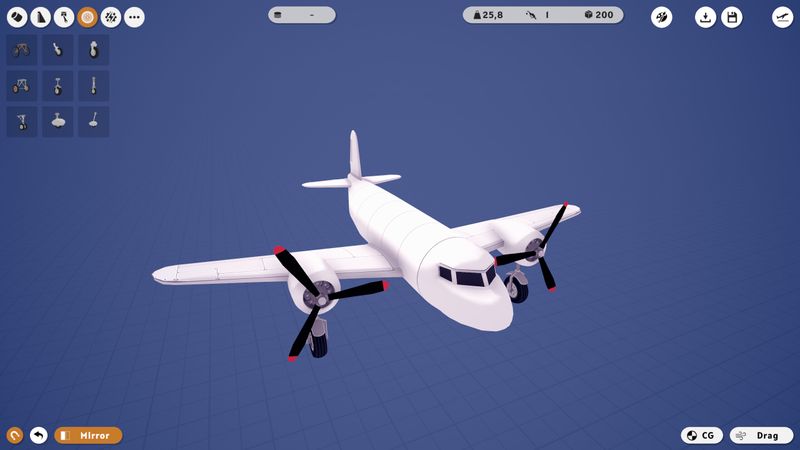
 Regarding characters, they come across in brief NPC portraits and mission texts. The game lacks deep dialogue, but that restraint fits its indie scope and minimalist aesthetic without feeling shallow.
Regarding characters, they come across in brief NPC portraits and mission texts. The game lacks deep dialogue, but that restraint fits its indie scope and minimalist aesthetic without feeling shallow.
 Even so, each airport manager gets a tiny sketch and story snippet. That adds charm without bloating the mission structure or overwhelming the player with lore. These brief glimpses of personality help the world feel connected, offering just enough flavor to distinguish one region from the next.
Even so, each airport manager gets a tiny sketch and story snippet. That adds charm without bloating the mission structure or overwhelming the player with lore. These brief glimpses of personality help the world feel connected, offering just enough flavor to distinguish one region from the next.
 Of course, I’d love more character arcs. Right now, your growth ties directly to unlocks like engine tiers or airframe variants. It works—but I’m hungry for more emotional stakes and evolving relationships. A few recurring NPCs or branching dialogue paths could deepen immersion without sacrificing pacing.
Of course, I’d love more character arcs. Right now, your growth ties directly to unlocks like engine tiers or airframe variants. It works—but I’m hungry for more emotional stakes and evolving relationships. A few recurring NPCs or branching dialogue paths could deepen immersion without sacrificing pacing.
 At the same time, fewer characters speed up my runs. I just pick a flight, review goals, and go—no delays, no excessive dialogue trees, just streamlined action.
At the same time, fewer characters speed up my runs. I just pick a flight, review goals, and go—no delays, no excessive dialogue trees, just streamlined action.
 The challenge ramps nicely. Early jobs teach the ropes: balance, refueling, cargo weight. Later hauls force you to rethink designs and experiment with wind resistance and engine tuning to meet tighter deadlines.
The challenge ramps nicely. Early jobs teach the ropes: balance, refueling, cargo weight. Later hauls force you to rethink designs and experiment with wind resistance and engine tuning to meet tighter deadlines.
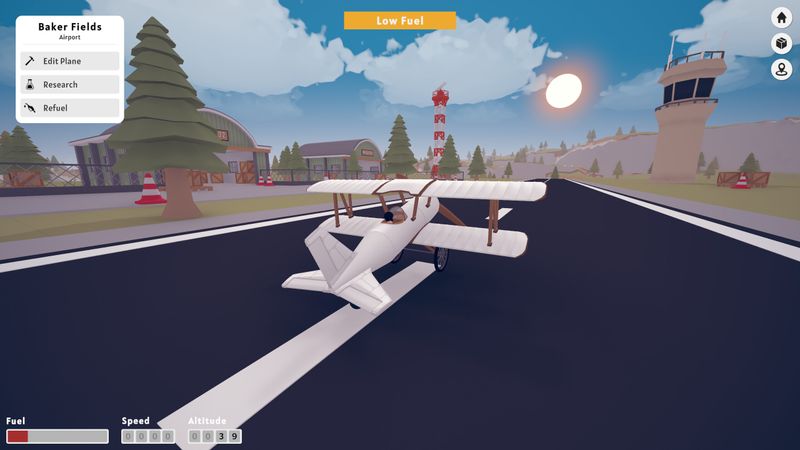
 There was a spike when cargo weight doubled mid-game. But upgrades in fuel tanks or rear propellers smoothed the curve and unlocked longer-range tactics, rewarding experimentation and learning curves.
There was a spike when cargo weight doubled mid-game. But upgrades in fuel tanks or rear propellers smoothed the curve and unlocked longer-range tactics, rewarding experimentation and learning curves.
 Conveniently, creative mode lets me disable fuel limits to practice tough runs. It’s a smart accessibility touch that helps both casual and hardcore players alike experiment with designs risk-free.
Conveniently, creative mode lets me disable fuel limits to practice tough runs. It’s a smart accessibility touch that helps both casual and hardcore players alike experiment with designs risk-free.
 Building on that flexibility, disabling tutorials and extra HUD nearly slashes two minutes off my runs. That choice feels earned and unlocks new optimization layers for leaderboard chasers and meta runners.
Building on that flexibility, disabling tutorials and extra HUD nearly slashes two minutes off my runs. That choice feels earned and unlocks new optimization layers for leaderboard chasers and meta runners.
 As for longevity, replay value stands strong. Creative mode, secret airstrips, randomized biomes, and varied cargo types keep you exploring well after the main loop. The game keeps giving reasons to come back.
As for longevity, replay value stands strong. Creative mode, secret airstrips, randomized biomes, and varied cargo types keep you exploring well after the main loop. The game keeps giving reasons to come back.
 As a bonus, I aim for A-grade designs on every mission. I still redo flights to boost efficiency, even after completing all objectives. Because the game makes optimization genuinely fun.
As a bonus, I aim for A-grade designs on every mission. I still redo flights to boost efficiency, even after completing all objectives. Because the game makes optimization genuinely fun.
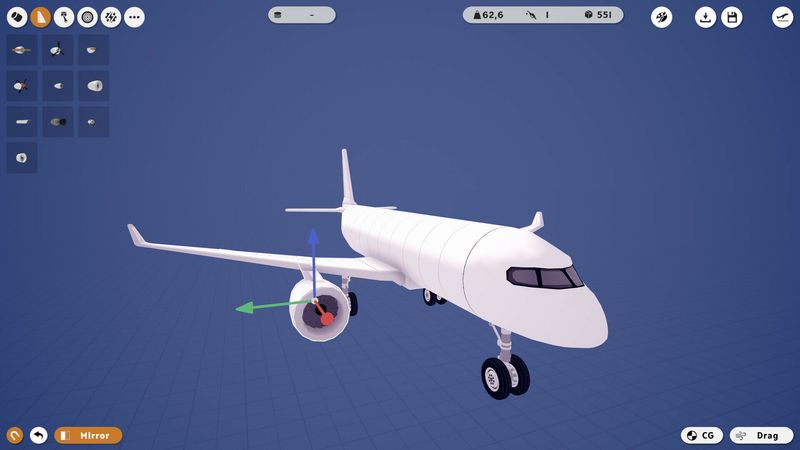
 The upgrade tree and research nodes invite dozens of builds. You can chase max cargo capacity, top speed, or tight-turn agility. Few indie sims match its content variety and modular depth.
The upgrade tree and research nodes invite dozens of builds. You can chase max cargo capacity, top speed, or tight-turn agility. Few indie sims match its content variety and modular depth.
 Naturally, I’ll keep refining to beat my own times. The global and friends-only leaderboards call me back daily, fueling my need to improve split by split. It’s a sandbox that respects your time while rewarding your effort.
Naturally, I’ll keep refining to beat my own times. The global and friends-only leaderboards call me back daily, fueling my need to improve split by split. It’s a sandbox that respects your time while rewarding your effort.
 To wrap up, Aviassembly carves a unique niche in indie flight sims. Self-published by Jelle Booij, it delivers deep systems design, clever pacing, and sandbox freedom in a small package that feels much bigger than its size.
To wrap up, Aviassembly carves a unique niche in indie flight sims. Self-published by Jelle Booij, it delivers deep systems design, clever pacing, and sandbox freedom in a small package that feels much bigger than its size.
 In comparison, Aviassembly stacks up well against SimplePlanes and Kerbal Space Program on design depth. It balances engineering sim elements with arcade accessibility and real-world inspired mechanics that appeal to a wide audience.
In comparison, Aviassembly stacks up well against SimplePlanes and Kerbal Space Program on design depth. It balances engineering sim elements with arcade accessibility and real-world inspired mechanics that appeal to a wide audience.
 In essence, it sits between casual flying games and full-blown simulators. This hybrid space feels welcoming, engaging, and deceptively deep for both tinkerers and thrill-seekers alike.
In essence, it sits between casual flying games and full-blown simulators. This hybrid space feels welcoming, engaging, and deceptively deep for both tinkerers and thrill-seekers alike.
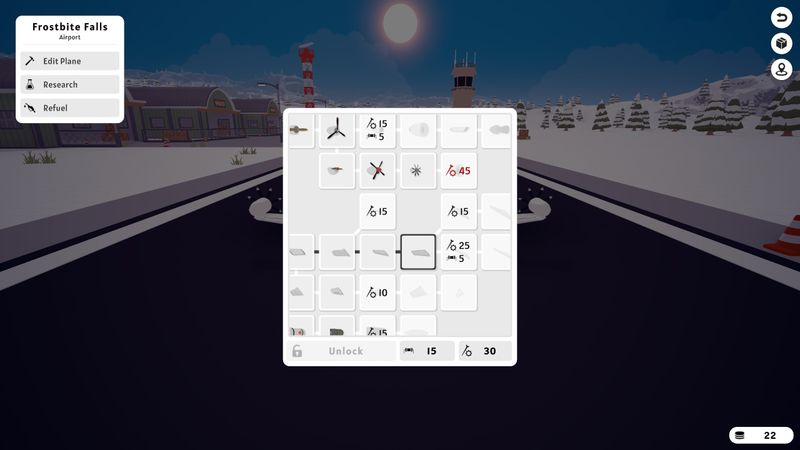
 Its mix of creative builds and ranked runs feels fresh and flexible. I recommend it for anyone curious about flight, speed, or design—especially fans of games like Trailmakers or Turmoil.
Its mix of creative builds and ranked runs feels fresh and flexible. I recommend it for anyone curious about flight, speed, or design—especially fans of games like Trailmakers or Turmoil.
 If you like Aviassembly, try SimplePlanes. It has fine part snapping and strong mod support. Kerbal Space Program offers deep physics and rocket building challenges. Ylands is a sandbox world with boat and plane building in a vibrant low-poly style. Scrap Mechanic gives you logic blocks for wild machine design. Stormworks: Build and Rescue adds dynamic water physics and rescue missions. Each title delivers creative tools and physics that reward smart planning.
If you like Aviassembly, try SimplePlanes. It has fine part snapping and strong mod support. Kerbal Space Program offers deep physics and rocket building challenges. Ylands is a sandbox world with boat and plane building in a vibrant low-poly style. Scrap Mechanic gives you logic blocks for wild machine design. Stormworks: Build and Rescue adds dynamic water physics and rescue missions. Each title delivers creative tools and physics that reward smart planning.

